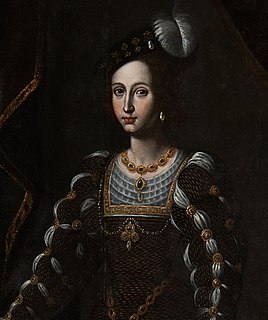Related Research Articles

Paul the Deacon, also known as Paulus Diaconus, Warnefridus, Barnefridus, or Winfridus, and sometimes suffixed Cassinensis, was a Benedictine monk, scribe, and historian of the Lombards.

Italian unification, also known as the Risorgimento, was the 19th century political and social movement that resulted in the consolidation of different states of the Italian Peninsula into a single state, the Kingdom of Italy. Inspired by the rebellions in the 1820s and 1830s against the outcome of the Congress of Vienna, the unification process was precipitated by the revolutions of 1848, and reached completion in 1871, when Rome was officially designated the capital of the Kingdom of Italy.
Cornwall is a county in the south west of England, UK.

Bryan Waller Procter was an English poet who served as a Commissioner in Lunacy.

John Granville, 1st Earl of Bath PC, of Stowe in the parish of Kilkhampton in Cornwall, was an English Royalist soldier and statesman during the Civil War who played a major role in the 1660 Restoration of the Monarchy and was later appointed Lord Lieutenant of Ireland. He was the first in his family to adopt the modernised spelling as Granville of their ancient surname Grenville, which emphasised their supposed ancient 11th-century origin from the Normandy manor of Granville, Manche.

Virginia de' Medici was an Italian princess, a member of the House of Medici and by marriage Duchess of Modena and Reggio.

John of Eltham, 1st Earl of Cornwall was the second son of Edward II of England and Isabella of France. He was heir presumptive to the English throne until the birth of his nephew Edward, the Black Prince.

Infanta Beatrice of Portugal was Duchess of Savoy by marriage to Charles III, Duke of Savoy. She was the Sovereign Countess of Asti from 1531 to 1538.

The Kingdom of the Lombards also known as the Lombard Kingdom; later the Kingdom of (all) Italy, was an early medieval state established by the Lombards, a Germanic people, on the Italian Peninsula in the latter part of the 6th century. The king was traditionally elected by the highest-ranking aristocrats, the dukes, as several attempts to establish a hereditary dynasty failed. The kingdom was subdivided into a varying number of duchies, ruled by semi-autonomous dukes, which were in turn subdivided into gastaldates at the municipal level. The capital of the kingdom and the center of its political life was Pavia in the modern northern Italian region of Lombardy.

The Duchess of Padua is a play by Oscar Wilde. It is a five-act melodramatic tragedy set in Padua and written in blank verse. It was written for the actress Mary Anderson in early 1883 while in Paris. After she turned it down, it was abandoned until its first performance at the Broadway Theatre in New York City under the title Guido Ferranti on 26 January 1891, where it ran for three weeks. It has been rarely revived or studied.
Gundoin was the first Duke of Alsace in the middle of the seventh century. He was a Frankish nobleman from the Meuse-Moselle basin. He was, according to the author of the Vita Sadalbergae, an "illustrious man, opulent in wealth and fame according to the highest secular dignity and skilled in courtly affairs."
These are the films directed by the pioneering American filmmaker D. W. Griffith (1875–1948). According to the Internet Movie Database, he directed 518 films between 1908 and 1931.

Isabella Clara of Austria, was a Duchess consort of Mantua, Montferrat, Nevers, Mayenne and Rethel by marriage to Charles II, Duke of Mantua and Montferrat.

Maria Stanhope, Countess of Harrington (1797?-1867), better known as Maria Foote, was a British actress and peeress in the nineteenth century.

Pomponio Torelli was Count of Montechiarugolo and a writer of prose, poetry and plays. He is principally remembered for his five tragedies.
Francesco Fiorentino was an Italian philosopher and historiographer.
Rosario Romeo was a leading historian of the Italian Risorgimento and of Italian modern history more generally. His best-known work is probably the wide-ranging and substantial biography of Cavour, of which the third volume appeared only in 1984, following a gestation period, according to at least one source, of nearly thirty years.

Edoardo or Eduardo Matania was an Italian painter and illustrator, depicting detailed penciled portraits; and genre, patriotic and historic scenes.

The Castle of the Pico is a castle in the city center of Mirandola, in the province of Modena, Italy.

Santa Maria Bianca Hospital is a community hospital located in Mirandola, in the province of Modena, in Emilia-Romagna, Italy.
References
- ↑ John Ford (2002). "Appendix 4: Love's Sacrifice and Mirandola". In A.T. Moore (ed.). Love's Sacrifice. Manchester University Press. p. 300. ISBN 9780719015571.
- ↑ Atti del Congresso di storia del Risorgimento italiano (in Italian). 47. Regio Istituto per la storia del Risorgimento italiano. 1976. p. 351.
- ↑ "Mr Bryan Waller Procter – "Barry Cornwall"". The Athenaeum (245 0). British Periodicals Limited. 1874-10-10. p. 481.
- ↑ "Barry Cornwall". The Eclectic Magazine of Foreign Literature, Science, and Art. Vol. 26-89. Leavitt, Trow, & Company. July 1877. p. 62.